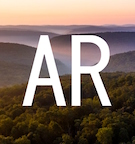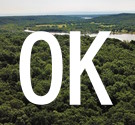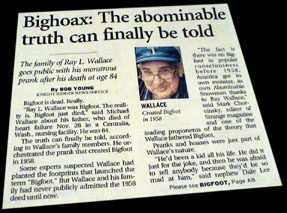
|
||||||||||||||||||
|
|
||||||||||||||||||
|
| ||||||||||||||||||
  








  









| ||||||||||||||||||

John Green's Commentary of the 'Birth of Bigfoot' Story.
- BFRO's Quick FAQ on the 'Death of Bigfoot' Story
- More Commentary on the 'Death of Bigfoot' Story
- Samples of other Wallace Claims
Canadian journalist / author John Green is undoubtedly the top historian
of the bigfoot/sasquatch phenomena. He is also the only surviving person to
have investigated the orginal track finds at Bluff Creek in the 1950's. In the
text below he sorts out the confusion about these tracks.
Maybe it?s time for a history lesson before the last available witness, which I seem to be, passes on.
The tracks that were observed in the Bluff Creek drainage in northern California in the 1950?s are not just another set of tracks that can easily be set aside as something tainted by claims of fakery while other tracks are still presumed to be genuine. They are the base layer of the bedrock on which the whole investigation is founded. Their importance goes far beyond the fact that they started the process of bringing the subject to widespread public attention and saddled it with the ridicule-prone name of ?Bigfoot?.
For all the books and websites and investigating organizations this subject has spawned and the huge public following it now has, it still involves only two facts that cannot be contested. One is that thousands of people claim to have encountered huge, hair-covered bipedal primates. The other is that something makes huge, humanlike footprints.
Of all the reported encounters, in only one case is there a backing of solid photographic evidence. That evidence comes from Bluff Creek Far more tracks have been seen and cast and photographed at Bluff Creek than anywhere else. Repeated observations of tracks of identifiable individuals have been documented at Bluff Creek far more than anywhere else. The tracks at Bluff Creek have been investigated more thoroughly and by more people and over a longer period than anywhere else. More top-quality casts and photographs of tracks have been made at Bluff Creek than anywhere else. The tracks at Bluff Creek appeared at a time and place when and where there was no knowledge of anything to imitate, circumstances that can never occur again.
The Bluff Creek tracks started the life-long quests of Bob Titmus, who found more solid evidence than anyone else, and Roger Patterson, who took the only good movie. Like most British Columbians, I grew up familiar with stories of Sasquatch giants I and had begun to investigate them seriously before Jerry Crew made his famous cast, but it was at Bluff Creek that I first saw that the huge tracks are real, and trying to establish what makes them is what I have been doing ever since.
For those whose familiarity with this subject may not go back that far, a few facts: The big tracks started appearing overnight where a construction crew was building a road along the west side of the uninhabited Bluff Creek valley in the summer of 1958. They showed up every few days not just in the loose dirt on the road, but also digging deeply into the harder surface of the steep sidehill at places above the road and below it. After some weeks Jerry Crew, a bulldozer operator, got from a taxidermist friend, Bob Titmus, instructions and material to make a cast of one of the prints. A picture of Jerry holding the cast appeared in a newspaper in Eureka, and went out on the wire all over the continent. With it was a story in which the name ?Bigfoot? was first published.
On seeing the picture in a Canadian newspaper I immediately drove to Bluff Creek to investigate, saw a few old but impressive tracks, talked to Jerry Crew, Bob Titmus and other witnesses and inspected the terrain the tracks traversed, on and off the road. Those tracks were roughly 16 inches long and matched very closely a tracing I had of a cast of one of the tracks found at the scene of a sasquatch sighting report in British Columbia in 1941.
A few weeks later I got a letter from Bob Titmus saying that he and another man had found and cast distinctly different tracks, roughly 15 inches long, on a sandbar in the creek below where the road crew was working I immediately returned to Bluff Creek and saw for myself that these new tracks were impressed about an inch deep in damp sand packed so hard that my own prints hardly marked it and that they were in a situation where the use of any sort of machinery to make them appeared to be impossible.
It is carvings of those tracks, not the 16-inch ?Bigfoot? tracks, that a nephew of Ray Wallace has displayed in photographs. They are fitted with straps so they can be walked on like snowshoes, but like snowshoes there is no way that human weight could impress them deeply into hard material.
In the next year and a half I was back at Bluff Creek several more times, spending about six weeks in all, and saw the 15? tracks in three more locations and also a third type of tracks, about 14? long, in another location east of Bluff Creek. I never saw the 16? track again at Bluff Creek but did see tracks that resembled it farther south at Hyampom in 1963. It was also reported seen frequently in 1963 and 1964 when logging was going on in the Bluff Creek valley, and Roger Patterson made a good cast of it there in 1964. The 15? tracks were also repeatedly seen, and were photographed and cast by a number of people in that period. Sometimes they were was accompanied by tracks roughly 13?, and Rene Dahinden and I saw those tracks together in three different places at Bluff Creek in 1967, in one instance being able to study hundreds of both tracks. Later in 1967 Roger Patterson and Bob Gimlin went to Bluff Creek, because of the tracks Rene and I had seen, and not only got a movie of the creature but watched it making tracks which they later cast. These tracks were also approximately 14?. If it is the same as the 14? from years before then there are at least four distinct tracks that have been observed at Bluff Creek, if it is different then there are five. There is also a 12? track usually discounted because it is within human range.
For all of these, while they remain recognizable as individuals, there is a considerable range of shapes, toe positions, length of stride, etc., conforming to slopes, obstacles and other influences. Those are the Bluff Creek tracks that I know about. Over the years there were, of course, far more that I didn?t see; many other people who investigated them; hundreds who went just to see for themselves after being told about them, and some who reported coming on them far from any road when they were timber cruising or road locating.
Ray Wallace is connected to all this in only two ways that have been established. The men who first reported the 16? tracks were his employees, and it was the Bluff Creek events that started him on his long career, mainly after he moved to Washington, of producing and trying to sell crudely-faked track casts and photographs and telling outrageous whoppers about his adventures with ?Bigfoots.? Ray wasn?t around any of the times I went to Bluff Creek and I never met him, but I was told right from the beginning of his reputation as a practical joker and yarn spinner, the latter being was amply confirmed when he phoned me and wrote letters to me over the years. There were people in California, of course, who were sure the footprints had to be faked, and some of them fingered Ray Wallace as the person they ?knew? had done it, but I have outlined the massive task that would have been involved, and no evidence was ever brought forward of any way that anyone could have done it.
A small-time freelance publisher on the East Coast, who may not even have known that Ray had moved away before most of the events took place, pronounced a few years ago that the people who investigated at Bluff Creek were blind fools and that Ray had faked all the tracks. He also proclaimed that Ray Wallace had told Roger Patterson just where to go to get his movie. He knew that because Ray wrote and told him so. By accident or design it was this man whose comments were sought by a Seattle reporter when Ray?s son announced after his death that Ray had told the family he had done the deed. Maybe Ray did tell them that, but it was a claim he never made in public, so he never risked being been called on to prove that he could do it. And whether the fault lies with Ray or with the next generation, the photographs they displayed indicate members of the Wallace family today don?t even know what the original ?Bigfoot? tracks looked like. It is that sort of ?evidence? that started a media storm in which the story grew and twisted until the world was told that not just all of the footprints, but also the Patterson movie, were fakes produced by Ray Wallace. And it is on that basis that people, some of whom even claim to take this subject seriously and continue to accept far less well-tested evidence, are now using the term ?the Wallace tracks.? They aren?t Wallace tracks, they are the Bluff Creek tracks.
Maybe I?ve lived too long, I don?t yet have a grave to roll over in.
John Green
Harrison Hot Springs, British Columbia, Canada